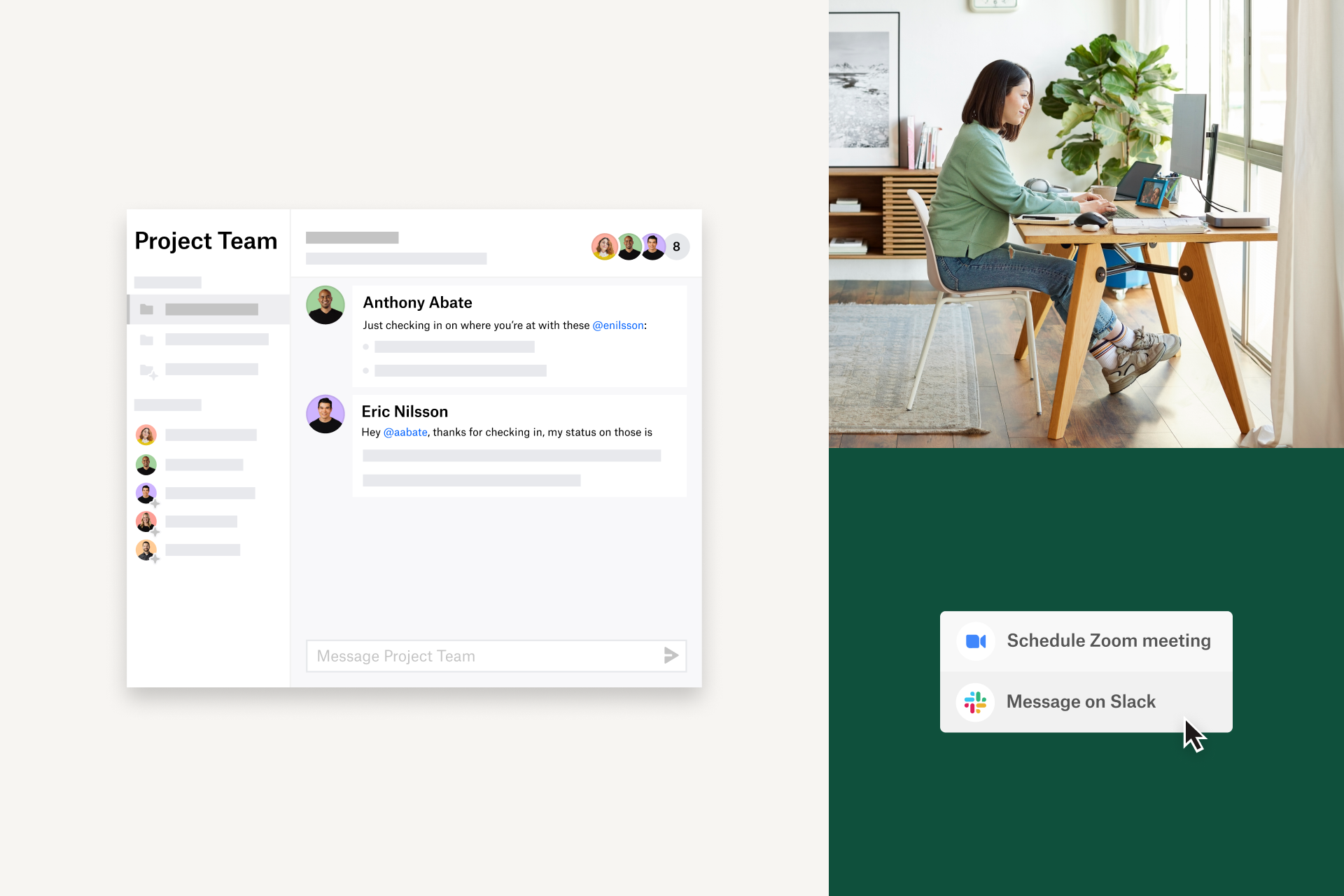Cross-functional meaning
Every office has its departments – from finance to HR, content to marketing – but what if this variety of skills was reflected in each individual team? That’s where cross-functionality comes in.
Cross-functional means groups of people with a variety of skills and experience who all work towards a common goal. So instead of passing one project around from team to team until launch day, a single team can handle every aspect of it. Consider it like each team being a mini workforce, able to complete every step of a project through collaboration, without reaching out to another department.
Why use cross-functional teams?
The main idea behind cross-functional teams is an increase in responsiveness, accountability, productivity and decision-making. By breaking down the barriers that mean only one team can approach any one process in a project’s life cycle, cross-functioning teams enjoy better collaboration. As well as this, team members can come from every level in the business, and include remote workers, creating a more diverse range of skill sets, insight and experience. A successful team will essentially be able to eliminate bottlenecks as there is no waiting time on handover to different departments.
Who can use cross-functional teams?
Anyone can find a way to incorporate cross-functional teams into their business, but there are some pre-requisites. A flat hierarchy, online teamwork and an openness to new ideas are all vital company concepts if you are going to make this approach work. Small business ventures, which usually have a small number of employees and need them all to be multi-functional to some degree, are common adopters of this work method. Cross-functional teams are thought to be able to problem solve better and therefore also take more creative risks.
A team can only feel comfortable doing this if the business as a whole nurtures this sort of approach. So if you know your company isn’t likely to give the platform to a remote working junior executive, then as well as needing to take a strong look at your company culture, you probably aren’t going to have much success in making cross-functional teams.
If you are stuck in a traditional mindset, you may not be ready to benefit from this forward-thinking way of working. Businesses like Netflix, Spotify and Google are all starting to adopt this work method, but it’s not an overnight change. You absolutely need the correct people from the right range of functional areas behind it in order to make it work.
How can a business use cross-functional teams?
There are several work styles that are built around the idea of cross-functional teams, such as agile, lean and kanban. Your best bet to adopting these work styles is to employ team members who are experienced in them, and they can then support team members through any teething problems. Cross-functionality may veer away from the traditional idea of having a project manager and direct reports, but having a leader is often a necessary thing. An experienced cross-functional team leader can help this transition run smoothly.
Diversity in your hiring is also key here. You want a variety of skills and experience. Cross-functionality arguably requires trust more than anything else. You want to be able to work as a team, to think outside the box when needed, to not be afraid to pick up the slack and to be supported when you do so. Hiring individuals with varying outlooks and professional experience will put you in good stead for overcoming issues and creatively solving problems.
What is most important for a cross-functional team?
The following traits are essential for successful teams:
Communication
Nothing new here. All successful teams need to stay connected and keep each other updated. Kanban and agile prize daily stand-ups (short stand-up team meetings which therefore are more to the point than sitting meetings) to keep everyone up to date. So don’t just get in touch when things are going wrong or urgent changes are needed. Remember to also celebrate wins as a team and keep communication about positives as well as more pressing issues. Open and honest communication channels are what help keep office politics, blame and victimised thinking at bay.
Accountability
It’s all for one, one for all. Like we said, communication is key here, but you also want to encourage people to be able to own their mistakes. Lead by example, not only to admitting when you are wrong, but by how you treat those who do likewise. Failure is an inevitable part of life; a good team can make it an important learning opportunity, not a chance to pass the buck.
Adaptability
Things can change a lot over the course of a single project. Your cross-functional teams need to be ready to deal with this. That means reacting to these alterations needs to be quick and efficient. Your team needs to feel confident in taking these new pathways to a successful project, and again, that comes back to trusting them to try something new, owning their actions and not pointing fingers should it fail.
Alignment
A common unofficial motto of agile and similar work methods is ‘get sh*t done’ and it’s a sentiment your team needs to buy into. You need to all be very clear on the progression of any project, and you need to share in the ownership. Decisions should be made as a whole, issues should be elevated as one. The desire not just to do something, but to get it done well, should be your team’s guiding light.
Do cross-functional teams work?
Yes, if they are formed correctly. Otherwise, it may be a recipe for disaster. It’s worth noting that many of the work methods that encourage cross-functionality were originally developed with certain work processes in mind. Agile was originally adopted by software developers, and Lean was designed for manufacturing. So you may find that the application and benefits of these methods just don’t fit businesses like a marketing agency, for example. Using these methods wrong can lead to all sorts of issues – the Harvard Business Review found 75% of cross-functional teams were dysfunctional.
We’ve already covered all the bonuses of forming the dream cross-functionality team, but here’s what can go wrong if you just throw any employees together and tell them to start working in agile.
Departmental loyalties
Yes, you may all be one team, but there may also be a silent need for employees to side with their department as a whole in the face of adversity. For example, is the marketing portion of your team going to push back on developers because it goes against department KPIs, even if it’s for the best of the client or project? Again, this is why you need the whole company to be on board with this work style. You can’t just spend one day being cross-functional and the rest of the time in a traditional work model.
Overloading the leader
Leaders can help keep teams on track. However, they can inadvertently encourage traditional work values to creep back into what is meant to be a future-facing way of working. Teams can easily start depending on them for too much. Have a key decision to make? Ask the leader. Have a problem? Tell the leader to fix it. See one member not being accountable? Rely on the leader to address it. Cross-functional teams flourish when they work and win as one.
Lack of communication
There is also the risk of you taking the ‘all for one’ mentality for granted and assuming that the team can perform using osmosis. Just because you are now cross-functional, doesn’t mean you are omnipresent. Make sure you keep everyone up to date with tools like annotations, shared folders, Trello boards and frequent stand-ups either in the office or virtually.
Lack of passion
This isn’t to say that every member of the team needs to prize work above everything else, but they need to be able to find motivation in this way of working. That means they need to know there is value in their work and that it has an impact on the project overall. You do this by working and winning as one. Anyone who fails to see purpose in their work is sure to lose interest.
How Dropbox can help
Cross-functional collaboration needs to be perfectly aligned, and Dropbox is the perfect tool for that. You can share folders and update and edit documents in real time. Every member of the team can know precisely where they stand.
Dropbox means your team doesn’t need to be in the same location to make sure collaboration is still flowing, with everything stored safely online. Cross-functional teams can have one central work location so they can jointly work to one core goal.




